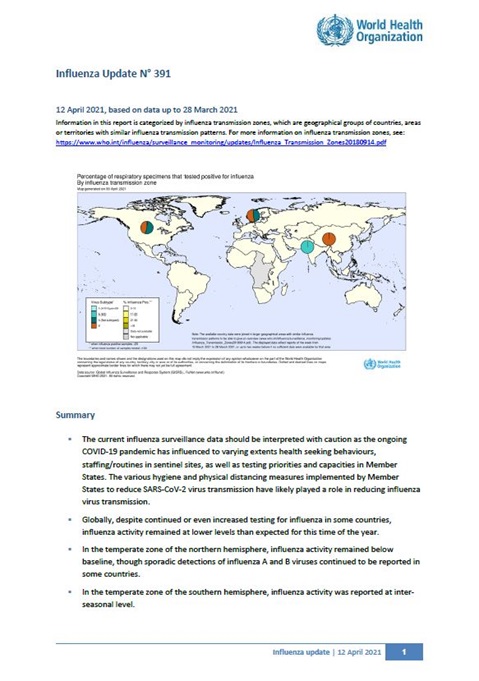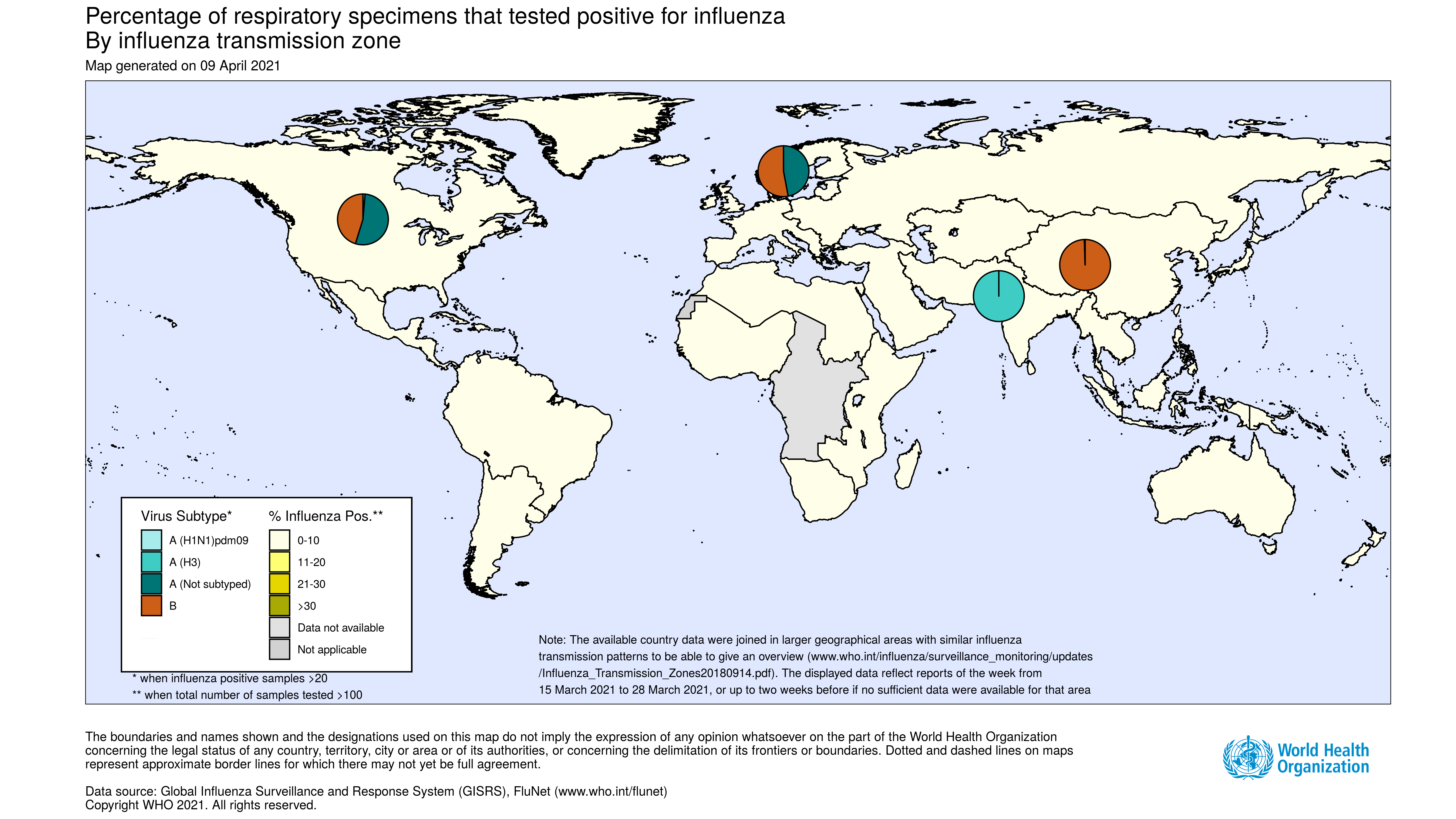Influenza Update N° 391

Overview
12 April 2021, based on data up to 28 March 2021
Information in this report is categorized by influenza transmission zones, which are geographical groups of countries, areas or territories with similar influenza transmission patterns. For more information on influenza transmission zones, see the link below:
Influenza Transmission Zones (pdf, 659kb)

- The current influenza surveillance data should be interpreted with caution as the ongoing COVID-19 pandemic has influenced to varying extents health seeking behaviours, staffing/routines in sentinel sites, as well as testing priorities and capacities in Member States. The various hygiene and physical distancing measures implemented by Member States to reduce SARS-CoV-2 virus transmission have likely played a role in reducing influenza virus transmission.
- Globally, despite continued or even increased testing for influenza in some countries, influenza activity remained at lower levels than expected for this time of the year.
- In the temperate zone of the northern hemisphere, influenza activity remained below baseline, though sporadic detections of influenza A and B viruses continued to be reported in some countries.
- In the temperate zone of the southern hemisphere, influenza activity was reported at inter-seasonal level.
- In the Caribbean and Central American countries, detections of influenza B-Victoria were reported in recent weeks.
- In tropical South America, no influenza but respiratory syncytial virus (RSV) detections were reported in some countries.
- In tropical Africa, influenza activity was reported in some reporting countries in Western Africa.
- In Southern Asia, sporadic influenza detections were reported in most reporting countries.
- In South East Asia, influenza A(H3N2) detections continued to be reported in Lao People's Democratic Republic (PDR).
- Worldwide, influenza B detections accounted for the majority of the very low numbers of detections reported.
- National Influenza Centres (NICs) and other national influenza laboratories from 90 countries, areas or territories reported data to FluNet for the time period from 15 March 2021 to 28 March 2021 (data as of 2021-04-09 07:54:52 UTC).The WHO GISRS laboratories tested more than 260722 specimens during that time period. A total of 569 specimens were positive for influenza viruses, of which 108 (19%) were typed as influenza A and 461 (81%) as influenza B. Of the sub-typed influenza A viruses, 5 (9.1%) were influenza A(H1N1)pdm09 and 50 (90.9%) were influenza A(H3N2). Of the characterized B viruses, 5 (1.2%) belonged to the B-Yamagata lineage and 399 (98.8%) to the B-Victoria lineage.
- During the COVID-19 pandemic, WHO encourages countries, especially those that have received the multiplex influenza and SARS-CoV-2 reagent kits from GISRS, to continue routine influenza surveillance, test samples from influenza surveillance sites for influenza and SARS-CoV-2 viruses where resources are available and report epidemiological and laboratory information in a timely manner to established regional and global platforms. Updated considerations for addressing disruptions in the influenza sentinel surveillance and extending to include COVID-19 wherever possible are available in the interim guidance, Maintaining surveillance of influenza and monitoring SARS-CoV-2 – adapting Global Influenza surveillance and Response System (GISRS) and sentinel systems during the COVID-19 pandemic. Updated algorithms for testing of both influenza and SARS-CoV-2 for surveillance are also included.
Source of data
The Global Influenza Programme monitors influenza activity worldwide and publishes an update every two weeks. The updates are based on available epidemiological and virological data sources, including FluNet (reported by the WHO Global Influenza Surveillance and Response System), FluID (epidemiological data reported by national focal points) and influenza reports from WHO Regional Offices and Member States. Completeness can vary among updates due to availability and quality of data available at the time when the update is developed.
1It includes data only from countries reporting on positive and negative influenza specimens.
